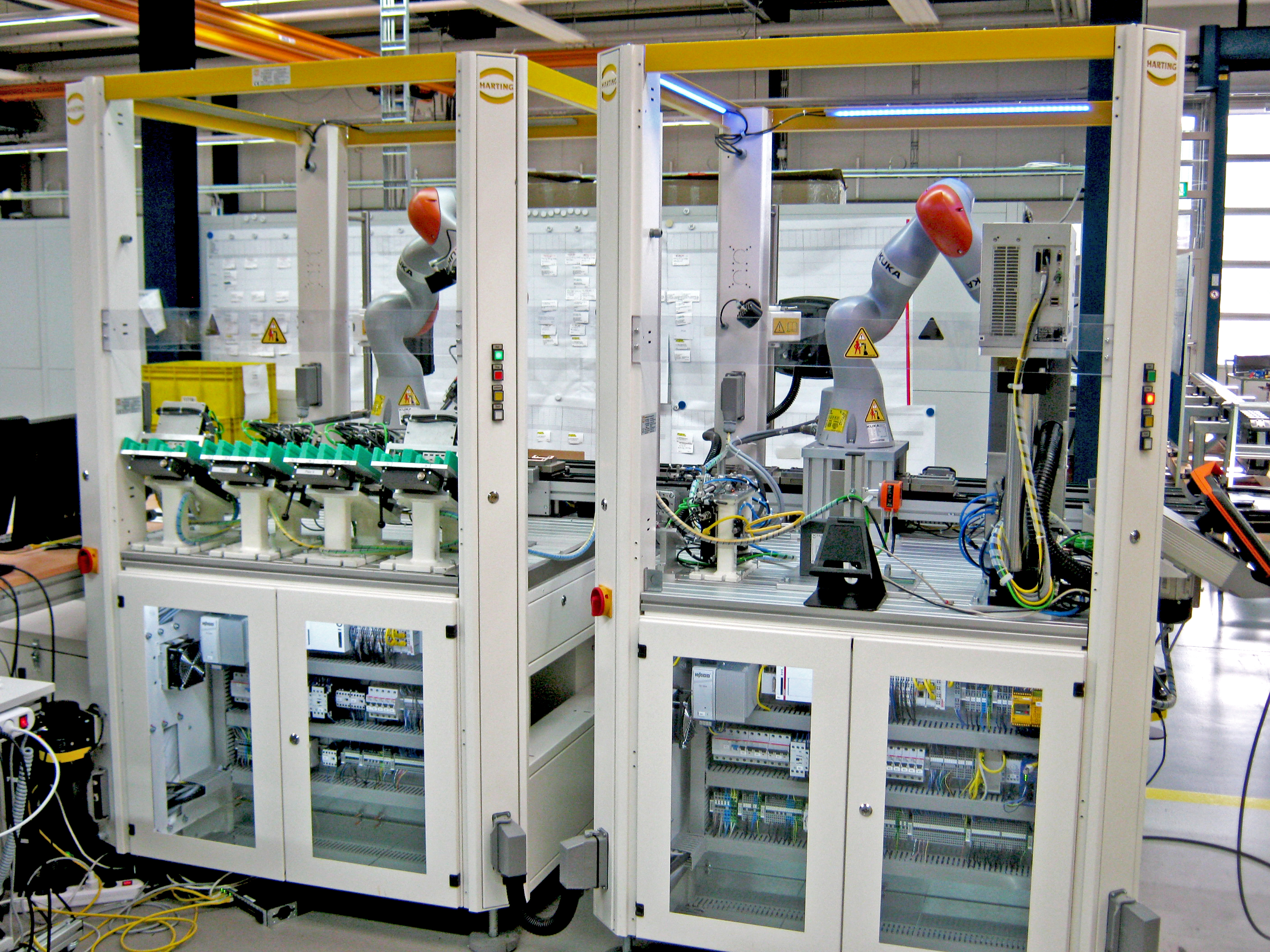HARTING Applied Technologies offers the optimal manufacturing process
HARTING Applied Technologies offers the optimal manufacturing process by taking advantage of the modular assembly cell concept. Thanks to a variety of expansion options, our customers can flexibly design their production to fit their requirements.
Slide-in modules can be integrated in the lower area of the cell, where the control cabinets are located. Drawer systems can also be built in to provide aggregate units, removable parts or setting tools.
The assembly processes are mounted on the aluminium plate. Tests can also be carried out outside the facility on this assembly plate. In this way, critical processes can be tested by HARTING well before the initial commissioning, which helps to ensure a successful start-up and acceptance without delays.
Profiles with press-in fitting are located on the side. Switches can be installed there later, without putting too much strain on the surface. To accommodate other controls for third-party aggregate units, it is also possible to place them above the cell by using additional control cabinet modules.
Would you like to learn more?
Optimal manufacturing process with modular assembly cell concept
Flexibility and a wide range of expansion options - The modular assembly cell concept keeps the investment risk low, and the level of automation can be gradually adjusted in parallel with the increase in production volume. The customer decides which and how many processes should be converted from a manual to an automated process next.



